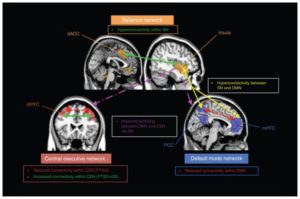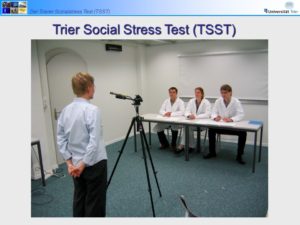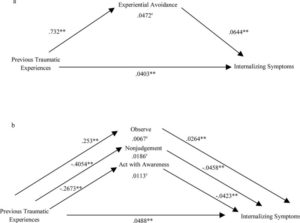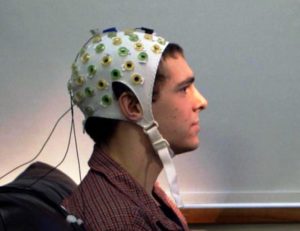The Noble Eightfold Path – Right Mindfulness
By John M. de Castro, Ph.D.
“Buddhism began by encouraging its practitioners to engage in smrti (sati) or mindfulness, that is, developing a full consciousness of all about you and within you — whether seated in a special posture, or simply going about one’s life. This is the kind of meditation that Buddha himself engaged in under the bodhi tree, and is referred to in the seventh step of the eightfold path.” – C. George Boeree
The predominant iconic image of the Buddha is of him sitting in blissful meditation. This results in the popular conception that meditation is at the center of Buddhism. But, as is evident from the first six components of the Noble Eightfold Path, at the center is how one goes about one’s life. This is evident in Right View, Right Intentions, Right Speech, Right Actions, Right Livelihood, Right Effort and Right Concentration. The real center of Buddhism is contained in the seventh component of the Buddha’s Noble Eightfold Path, Right Mindfulness. Mindfulness is the basis for all of the other components on the path. Unless one is mindful, there cannot be a right view, intention, speech, action, livelihood, effort, or concentration. The Buddha used meditation as a practice to develop mindfulness, thereby allowing progress on the path and eventually attaining enlightenment. So, meditation is a means to an end and that end is mindfulness and beyond.
Mindfulness is all about presence of mind or paying attention. But, it’s a particular kind of attention. We are forever paying attention to something. Mindfulness involves paying attention to what is occurring in the present moment. Paying attention to memories, daydreams, ruminations about the past, thoughts about the future, planning, problem solving, dreaming, visualizing, etc. are not mindfulness. Rather it is paying attention to the sensations from inside the body and from the outside environment, to the momentary thoughts floating through the mind, and to momentary awareness itself. In addition, it is intentional paying attention, doing so on purpose, and witnessing what is transpiring in the present moment without judgment, without consideration of it being good or bad, right or wrong, pleasant or unpleasant, or smart or stupid, rather, simply letting things be as they are. It can be thought of as thoughtless awareness, pure awareness of now, or bare attention, without reference to the past or the future or for that matter without any processing of the information whatsoever.
Mindfulness helps to lead to serenity, insight, deep concentration, or wisdom. It makes sure that the mind does not slip away and get lost in random undirected thoughts. Its primary tasks are to observe, to note, to discern phenomena with utmost precision until their fundamental characteristics and nature are brought to awareness. In order to attain these deeper understandings, the Buddha directed his followers that they should concentrate on four types of mindfulness being mindful of the body, feelings, mental states, and mental contents.
A sad aspect of our lack of mindfulness is an unawareness of the body. With the mind occupied with thoughts, ruminations, plans, etc. it is easy to lose track of the body and its physical state. It is eye opening when introducing people to a simple body scan, how amazed they are that they’re so unaware of it. So, to be truly in the present moment an acute awareness of the state of the body needs to be developed. This involves a number of components. Mindfulness of the body includes recognizing the position of the body, whether standing, sitting, lying down, and the various parts of the body, from toes to scalp and everything in between. Mindfulness of the body also includes a recognition of its composition of matter, air, and water, that are acquired from the environment, and thereby recognizing the body’s dependence and integration with the greater world. Finally, it involves a recognition of the body’s ever changing, impermanent nature, including its growth, development, deterioration, and eventual cessation in death. Yes, mindfulness of the body includes recognition of its mortality.
There is not only a lack of awareness of the body itself but also of the sensations from the body, including those associated with emotional states and how we evaluate, judge and respond to them. Mindfulness of feelings includes bring to awareness the sensations and feelings from the body and all its parts in the present moment, including feelings of temperature, pressure, pain, tingling, etc. As this awareness emerges so can an awareness of how we are judging these feelings as pleasurable, likable, distasteful, unlikable, or neutral and how we are reacting to them of doing things to develop or hold onto pleasant feelings and to eliminate or abbreviate unpleasant feelings. These are all deeply imbedded in human nature, but often appear to occur unconsciously. Mindfulness of feelings brings them into the light of awareness.
Emotions always involve both mental and physical components. Mindfulness of feelings is generally seen as pertaining to the bodily sensations accompanying emotions. It’s quite striking as mindfulness of feelings emerges and develops the degree to which they often occur without awareness or even recognition. Anger and fear are accompanied by a physiological activation, including increases in heart rate and blood pressure, muscle tone, blood moving away from the skin and gut to the muscles, and facial expressions. Yet, these are frequently not recognized. In developing mindfulness of feelings, the feelings produced by emotions are brought to awareness and felt deeply. This produces an ability to recognize the emotional state before it elicits a reaction that might harmful or regretted later. Mindfulness of feelings, then, allows for not only recognition but also the control of emotional reactions.
The mind is constantly interpreting and judging experience. These processes are responsible for forming ideas about these experiences, sometimes called mental formations, because they are formed in the mind. In psychology it is recognized that what emotion is felt is determined not only by our physical state but also how the mind interprets the environment. For example, fear is thought to occur when a physiological reaction occurs within what the mind interprets as a fearful context, e.g. the presence of a threat. Mindfulness of mental states involves firstly recognizing the state, e.g. anger, happiness, boredom, etc. and observing the workings of the mind that produce these mental formations. By watching how the mind interprets experience the practitioner becomes more and more aware of how the mind effects how experience is perceived and interpreted and the roots and conditions of these experiences. It may underline how the interpretation of the experience is based upon prior experiences or memories or how they are interconnected to other things in the environment. As the practice continues, it becomes easier and easier to see experiences in the raw, without interpretation, devoid of judgment, disconnected from prior experiences.
Every experience contains objects that are detected by our senses. Mindfulness of mental contents involves bringing these objects into awareness in all their aspects. This involves not only seeing and perceiving the object exactly as it is at the moment but also observing its impermanence and it interconnectedness to everything else. It’s seeing the object as an absolutely unique and ever changing expression of the entire universe. Deep mindfulness of an object includes perceiving how it is dynamically changing from moment to moment. An apple has a particular immediate appearance but this is just a snapshot of the apple which has changed moment to moment, from a seed, earth, and water, to a tree, to a bud, to an unripe piece of fruit, to its current state as a one of a kind apple. It is also to see that this apple will continue to change to overripe, to rotten, to garbage on the ground, to its component elements of soil and water, to its return to the earth. In other words, mindfulness of mental contents involves seeing the object as a transitory impermanent expression. In addition, it is to see how it is connected to everything else, the sunlight, the rain, the soil, the evolution of apple trees, the farmer, the machinery, the inventors of the machinery, the metal, plastics, and gasoline in the machinery, etc. In other words, it’s to see the apple as and ever changing and interconnected to all of existence. When objects are viewed in this way, they are truly seen mindfully.
So, Right Mindfulness is the development of an accurate and precise awareness of the present moment uncolored by ideas, memories, beliefs, expectations, etc., just the experience as it is. This is essential to progress on the path as it’s impossible to develop the other seven components of the path without being able to accurately perceive exactly what is actually transpiring in the present moment. It is the essential foundation for everything else. With it we have hope of progressing toward enlightenment, without it, we’re lost in delusion. So practice resolutely to develop mindfulness and move forward on the path.
“When right mindfulness is developed and made much of, one realizes what one should do and should not do. Whether one should speak or not speak. When one speaks, what should be spoken and not spoken. Right mindfulness is the basis for the development of the right path that culminates in knowledge, wisdom, contentment and the highest happiness.” – Mithra Wettimuny
This and other Contemplative Studies posts are also available on Google+ https://plus.google.com/106784388191201299496/posts









